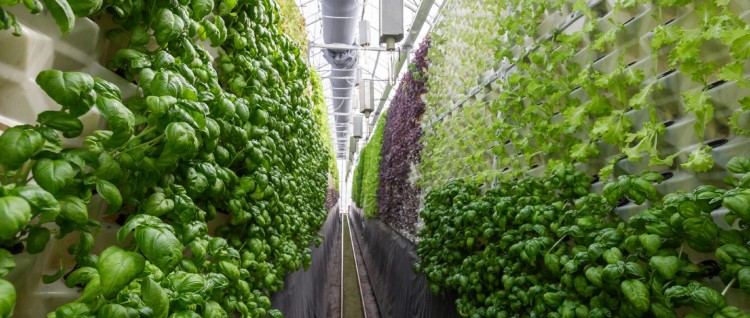Vertical farming, a rapidly emerging trend in urban Asian real estate, is revolutionizing the agricultural landscape, particularly for small-scale, urban farmers. This innovative farming method, which focuses on maximizing crop yields in confined urban spaces, has proven not only to maintain high-quality produce but also to significantly alter the way resources are used. By drastically reducing water and land usage, vertical farming is becoming a popular and sustainable option in densely populated Asian cities, leading to a new era in urban agriculture.
Revolutionizing Urban Farming: The Appeal of Vertical Farming in Asia
In the bustling urban centers of Asia, where space is at a premium, vertical farming offers a highly efficient solution to the challenges of traditional agriculture. This innovative approach is particularly appealing in densely populated areas, such as the The Orie in Singapore, where it can fit into small and unconventional spaces. By utilizing vertical space in urban areas, where horizontal land is scarce, vertical farming becomes a practical solution. As Asian cities continue to expand, this method of farming presents an attractive option for producing fresh, local produce right in the heart of urban centers, bringing sustainability and green living closer to home.
Sustainability and Efficiency: Key Benefits in Urban Settings
The key benefits of vertical farming in urban Asian real estate lie in its sustainability and efficiency. This method uses up to 95% less water than traditional farming, a significant advantage in regions where water scarcity is a concern. Additionally, by growing crops in controlled environments, vertical farming reduces the need for land space, which is a critical issue in densely populated urban areas. This efficient use of resources not only caters to the needs of urban dwellers but also aligns with the growing global emphasis on sustainable and environmentally friendly practices.
Understanding the Shift: From Traditional to Vertical Farming
To grasp the significance of vertical farming, it’s essential to consider the context of current agricultural practices. Astonishingly, agricultural irrigation accounts for approximately 70% of global water usage. Furthermore, a recent study has highlighted that between 90% and 99% of deforestation in tropical regions is driven by agriculture. These startling statistics underline a harsh reality: conventional farming methods are rapidly approaching a point of unsustainability as natural resources dwindle.
This is precisely where the role of vertical farming becomes crucial. As traditional agricultural methods strain under the weight of environmental and resource limitations, vertical farming offers a beacon of hope. It presents an alternative that not only addresses these challenges but also paves the way for a more sustainable and efficient approach to crop production.
Maximizing Efficiency: The Potential of Vertical Farming
The innovative concept of vertical farming offers a transformative approach to agricultural practices. This technique involves stacking produce during growth to optimize space usage and crop yield, while significantly reducing the consumption of resources. Remarkably, vertical farming can lead to a reduction in water usage by 70 to 95 percent and land use by over 90 percent. This reduction in resource consumption can alleviate the pressure on local ecosystems, fostering biodiversity and protecting endangered species from habitat loss.
Economic Viability and Environmental Benefits
Beyond its environmental virtues, vertical farming is also recognized for its economic and efficiency advantages. It can yield up to ten times more produce for certain crops compared to traditional farming methods. Scaling up these operations could lead to further profit margins due to economies of scale. Additionally, vertical farming is less susceptible to adverse weather conditions and natural disasters, such as floods, which are a primary cause of crop loss.
Addressing Challenges and Opportunities
Despite its promise, vertical farming faces certain challenges, particularly in large-scale applications. Many farmers, especially those with established practices, may find it daunting to overhaul their systems without assured sustainability and profitability. The emerging technology requires expertise in areas such as lighting, pH balance, and irrigation systems to ensure crops meet high-quality standards, including those for imports. For many, the risks associated with trial and error are too high, given the need for consistent production.
The initial investment in vertical farming is another significant hurdle. The cost of acquiring necessary equipment and the need to retrain or upskill existing workers, or alternatively, invest in new automation technologies, can be substantial.
An intriguing solution lies in incentivizing the younger generation of agricultural entrepreneurs to integrate vertical farming from the outset. Utilizing existing structures, such as shipping containers and mine shafts, for vertical farming could reduce the need for further deforestation.
Global Impact and Future Prospects
The adoption of vertical farming could open new trade markets, particularly in regions like the European Union, where there is a growing emphasis on sustainability and stringent regulations on imports. This shift could stimulate economic growth and contribute to solving issues like youth unemployment.
However, realizing the full potential of vertical farming requires significant research and development. Establishing a resilient agricultural infrastructure that can withstand unpredictable weather and natural disasters is essential. Once these initial barriers are surmounted, vertical farming could provide a safeguard for future food supplies, bolster economic gains through increased efficiency, and significantly reduce the environmental impact of farming.
Conclusion
In conclusion, vertical farming holds the promise of a revolutionary change in the agricultural landscape. With the right strategies and investments, this technique could redefine the future of farming, offering a sustainable, profitable, and efficient pathway to meet the world’s food demands while preserving the environment.




